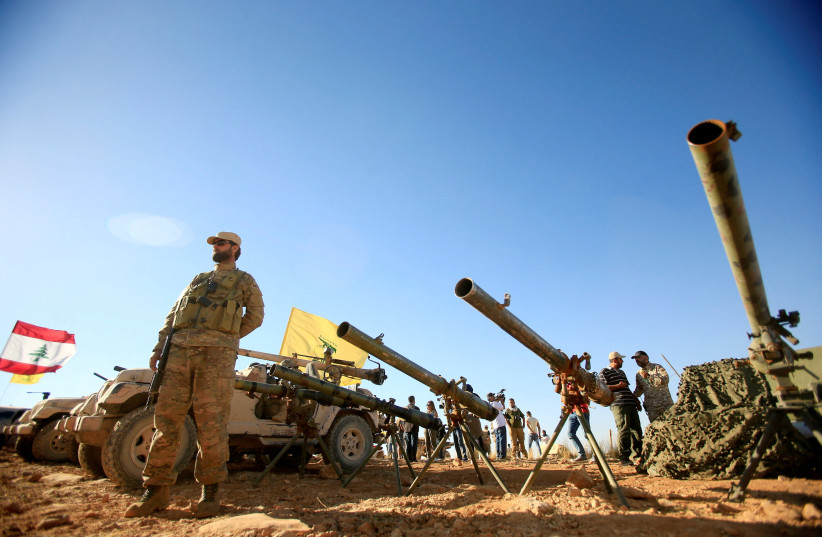The Iranian-backed terrorist group Hezbollah on Wednesday claimed it targeted the headquarters of the IDF’s 91st Division in Biranit, near the Lebanese border, with a Burkan missile, according to a report at the Beirut-based, pro-Iranian Al Mayadeen news channel.
Sirens sounded in the areas of Alkosh, Matat, Fassuta, Netua, and Hurfeish on Wednesday in the morning, the report said. The 91st Division is responsible for the Lebanese border.
Hezbollah has claimed to target the 91st Division’s base in the past. It has also targeted IDF Northern Command in Safed and an IDF facility on Mount Meron.
Hezbollah strikes Israel targets
Hezbollah appears to be trying to increase tensions in the North. On Tuesday, it flew two drones into Israeli airspace and carried out other attacks. This follows the night of April 13-14, when Iran attacked Israel, and Hezbollah fired more than 150 rockets at IDF bases in the Golan Heights in support.
On Wednesday, “in solidarity with Gaza and in response to the attacks on Lebanese villages, the Islamic Resistance in Lebanon [Hezbollah] announces that it has targeted sites belonging to the Israeli occupation on the border with occupied Palestine,” Al Mayadeen reported.

The Burkan missile has a heavy warhead, but it can only be fired a short distance. Israel has wanted Hezbollah to be removed from the border area so that it cannot fire large missiles like this and also anti-tank missiles, which it has used since it began attacks on Israel on October 8 to back Hamas. Hezbollah has fired more than 3,200 missiles and rockets at Israel over six months of attacks.
Hezbollah claimed that it also “targeted a new deployment of Israeli occupation army soldiers south of the same barracks, using rocket weapons and artillery shells, twice in two separate operations,” Al Mayadeen reported.
It claimed to target an area called Ramia, the report said, but it was not clear where this was.
Hezbollah also said it had targeted an IDF vehicle near Metulla on the northern border. In the same report, Hezbollah claimed to target an “Iron Dome battery in Kfar Blum.”
Hezbollah claims some of its recent attacks are in “response” to Israel targeting Lebanon and IDF strikes in the Bekaa Valley. It was not clear which strikes the report was referring to, but Hezbollah often claims it is “responding” to various attacks, and it has an “equation” it uses to decide how to respond.
For instance, the report said, “Yesterday, the resistance announced that it had targeted the headquarters of the air control unit in Meron, explaining that it was done with missile and artillery weapons. It targeted the headquarters of the 769th Eastern Brigade Command in Kiryat Shmona and the headquarters of the 146th Division Command in Ga’aton, using, in both operations, Katyusha rockets.”
The 769th is the eastern brigade of the 91st Division. The 146th is an IDF reserve brigade.
At the same time, the report said the Lebanese Shi’ite movement Amal was mourning the death of “Hussein Qassem Karsht, who died as a martyr following an Israeli aggression against the town of Ain Baal, south of Lebanon.” Amal published an image of him on Tuesday.
The recent Hezbollah claims indicate how it weighs its decision-making and how it poses as a military group targeting military sites.
Hezbollah is an Iranian-backed terrorist group, but it wants to pretend it is defending Lebanon, and that it is primarily targeting the IDF in its attacks. In fact, it has damaged and destroyed about 800 homes in northern Israel and forced 50,000 people to be evacuated from the border.
